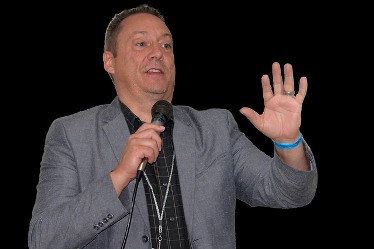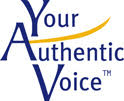
Photo courtesy of Flickr user David Amsler
“Oh, no, I was supposed to be here at 8? I thought I spoke at 8:30!”
“The other speaker took half of my time. Now what do I do?”
“How long should my story be? I don’t want to bore anyone.”
If you’ve done any speaking at all, you know these “time” challenges and concerns happen. Miscommunication, unavoidable delays and inexperience can all play a part. What to do, what to do . . . ?
When faced with uncertainty, my first line of defense is to have a plan. Now, I know plans change. However, to my mind, better to plan for contingencies and not need them, or have to change them, than have no plan at all. Here are my recommendations so you can not only avoid the unnecessary “drama” time challenges can create, but also emerge the hero.
“Oh, no, I was supposed to be here at 8. I thought I spoke at 8:30!”
I’ve confirmed dates and times and still had conflicts, and I consider myself pretty organized. It can happen. Prevention is the key. Outside of using all of your skills to get the right information into your calendar, my rule of thumb is to be at the event at least an hour early, if at all possible. Sometimes, for one reason or another, you can’t. If not, get there as early as you can. By doing so, you can make sure you’re set up, all the AV works, and you’re there to greet your guests. If, by chance, you were confused about the time, you’ll still be there on time for your speaking engagement. Plus, your meeting professional is going to love you. When you walk in the door well ahead of time, he or she will experience a deep sigh of relief. Walking in at the last minute is unnerving. Do yourself, your meeting professional and your audience a favor and get there early.
“The other speaker took half of my time. Now what do I do?”
If you’ve been presenting for any amount of time, you’ve probably experienced this. You’re all set up to deliver your 30- or 45-minute presentation and the speaker ahead of you uses half your time. Unfortunately, the meeting professional or emcee didn’t do anything about it, so now you’re stuck. What do you do?
First, check in with your meeting professional. Let her know you can speak within the remaining time, or do your originally planned presentation. What would she like? You are now the hero. You’ve saved her butt! If she wants you to cut back on your time, this is where your speaking skill comes in. I help my clients construct their speeches to work like an accordion. You have your open, main points, and close. You have the backup for your main points. If your time is cut, you can cut back on the backup. You decide which parts of your speech are the most important to your audience, based on your research, and you share that. You can still get in your main points, just not all the backup. The audience doesn’t know you have a lot more to say. Only you do, and you’ve worked out a potentially challenging situation for your meeting professional and the audience as well. No one wants to be held over for another half hour, and you don’t want to be the one to do that! Prepare your speech so you can cut it or expand it based on your situation and you’ll emerge the hero.
“How long should my story be? I don’t want to bore anyone.”
Your story should be as long as it needs to be and no longer. Sometimes a story only needs to be 30 seconds long. Sometimes it needs to be 15 minutes long, or longer! Some cultures tell stories that go on for days. A minute here or there doesn’t really matter if you are telling a good story. That’s the key. Telling a good story — a story you’ve crafted using storytelling technique, and rehearsed to deliver with color and emotion to keep your audience laughing and crying.
Your story length also depends on the amount of content you need to deliver and how long you’re speaking. Some speeches are one long story with points hidden within. Others contain a lot of data or factual information and the stories add the context and entertainment value.
To start, set aside your “time” concerns. Determine the point you want to make. Consider an example that makes that point, and then use a story development technique to create your story. Ge t it on paper. Speak your story out loud. Pay attention to the pacing of the story and how you feel. You’ll discover what’s necessary and then you can edit. When you’re done, time it. See where you stand. This process involves many takes. Ultimately, the proof will be in the telling. Rehearse it in front of others before you get in front of an audience. Get their feedback. Make additional revisions. Then, when you’re in front of your audience, go for it! Don’t hold back. You’ve got to be all in. Only then will you know what impact your story can have. It has very little to do with how long it is, and everything to do with your commitment! When you’ve delivered your story with everything you’ve got, your audience will feel it and love you for it. You’ll be the hero that supports them to feel like heroes too!
How you use your time can either support your success, or rob you of it. Plan ahead. Take everyone into consideration. Be prepared. And always, have fun! When you do, you can handle those “time” challenges and emerge the hero. I’d love to support you. I can be reached at Andrea@AndreaBeaulieu.com.

Leave A Comment